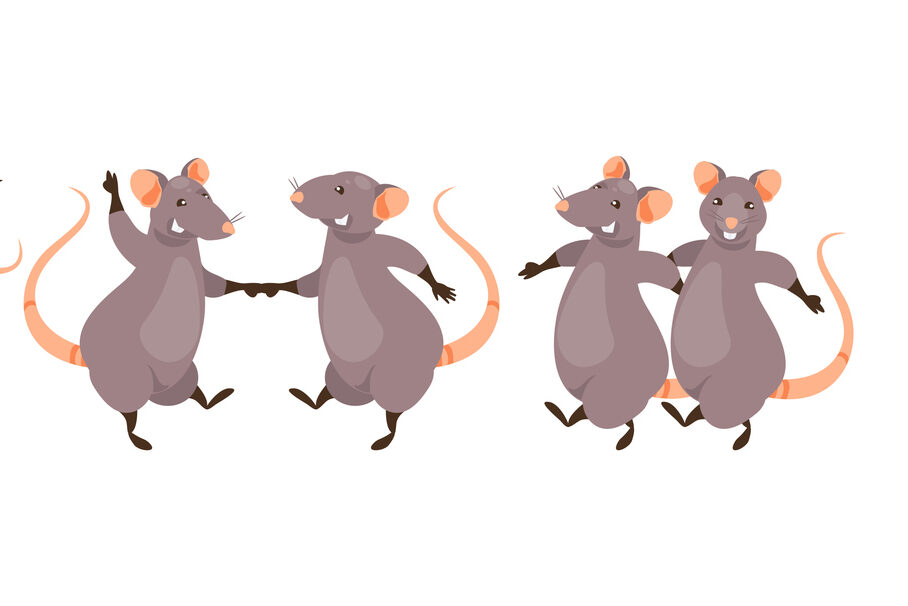1. Scientists Discovered Rats Have a Natural Sense of Rhythm

Move over, party animals—rats just crashed the dance floor. Scientists have uncovered something wild: rats don’t just react to music, they actually bop their heads to the beat. That’s right—these tiny creatures have a built-in rhythm detector, and it turns out they groove just like us. But how? And what does this say about the link between music and the brain? Get ready for some mind-blowing science.
For years, it was thought that only humans and a few birds, like parrots, could synchronize their movements to music. But a groundbreaking study showed that rats can actually keep the beat. Researchers at the University of Tokyo placed miniature sensors on rats’ heads and played them some tunes—including Mozart and Lady Gaga. The result? The rats subtly nodded their heads in sync with the beat, just like a music lover at a concert. Even more surprising? They did it without training. Unlike dancing birds, which learn to mimic rhythm from their surroundings, rats seemed to have an innate sense of timing. And this discovery raises an even bigger question: If rats naturally move to music, could the ability to feel rhythm be more universal than we ever imagined?
2. Rats Prefer a Specific Tempo—Just Like Humans

If you’ve ever skipped a song because it felt too slow or too fast, guess what? You have something in common with rats. It turns out these little creatures have a surprisingly refined sense of rhythm and actually prefer beats within a specific tempo range—about 120 to 140 beats per minute (BPM). That’s the same range most humans naturally enjoy, making rats unexpected musical connoisseurs.
Think of songs like Billie Jean by Michael Jackson or Uptown Funk by Bruno Mars—those catchy beats fall right within the rats’ preferred range. When scientists played music at different speeds, the rats didn’t just react randomly; their movements showed clear favoritism toward certain tempos. When the beat was too fast or too slow, their head-bobbing got weaker or stopped altogether, as if they were saying, Nah, this one’s not for me. They weren’t just twitching—they were genuinely grooving to the rhythm, just like we do when a song hits just right.
3. Their Head-Bobbing Mirrors Human Dance Patterns

You know that feeling when a song starts playing, and before you even realize it, your head is nodding to the beat? Turns out, rats do the same thing. Scientists found that when music played, the rats’ heads moved in sync with the beat, in a way that eerily mirrors how humans dance without even thinking about it.
The key to this lies in something called entrainment—the ability to synchronize body movements with an external rhythm. Before now, researchers thought only humans and a few birds, like cockatoos, had this ability. But rats just crashed the party, proving that beat synchronization may be a far more widespread brain function than we ever realized. These findings suggest that rhythm perception isn’t just a social or cultural phenomenon; it might be something deeply rooted in the way brains process sound across different species.
4. This Could Change What We Know About the Connection Between Music and the Brain

For years, scientists have wondered: Why do humans love music? Why does a great beat make us move? Some have argued that rhythm perception is tied to language or social bonding, but the fact that rats—who don’t sing, dance, or even use rhythm socially—can still lock into a beat suggests there’s something much deeper at play.
It turns out that our love for music might not be about cultural learning at all, but rather an ancient neurological function built into the brain itself. If rhythm processing is this universal, it could mean that many animals—perhaps even those we’ve never studied—might share a hidden appreciation for beats. This research could also have major implications for medical fields, particularly in rhythm-based treatments for conditions like Parkinson’s disease, where synchronized movement can improve motor function.
5. The Rhythm of Life—Even in the Smallest Creatures

Who would have thought that rats, of all animals, would be the ones to challenge what we know about music and the brain? These tiny creatures, usually associated with scavenging or lab experiments, have just revealed one of nature’s best-kept secrets: rhythm perception isn’t just a human trait. It may be something embedded in the brains of far more species than we ever imagined.
This discovery doesn’t just make rats unexpectedly cool—it completely changes how we think about music’s role in nature. Maybe rhythm is more than just entertainment. Maybe it’s a fundamental part of how brains process the world. So, the next time you catch yourself nodding along to a song, remember: somewhere in a little lab, a rat might be bobbing its head right along with you. Now, the real question is—what song do you think rats would dance to? Let us know!


